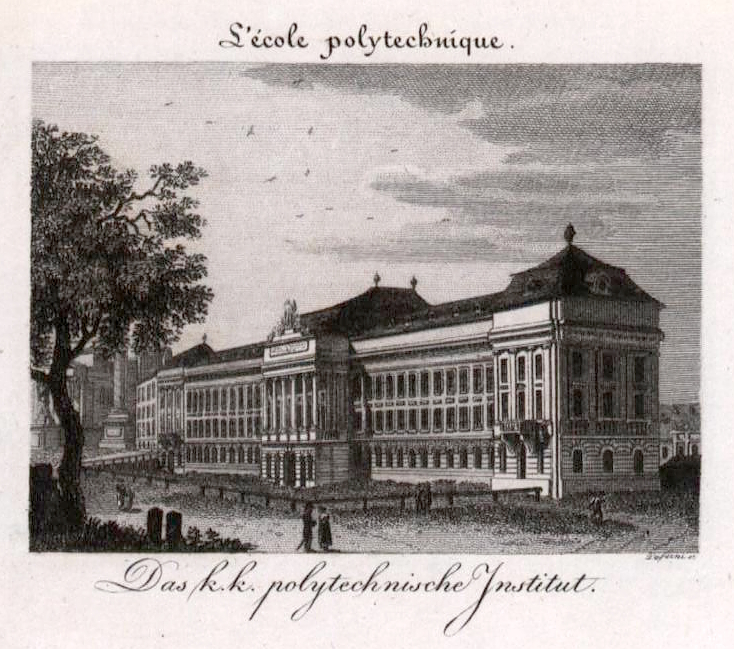Analysing and visualising historic changes of the urban fabric

Workshop On Spatial Digital Humanities
and
TU Wien, Main building, Karlsplatz 13, 1040 Vienna, Room Number: AC0246
Birgit Knauer, TU Wien and the UMMT team
Workshop information as PDF
Book of Abstracts and CVs as PDF
The aim of the workshop is to present current digital humanities methods for analysing and visualising historical changes of the built environment and structural transformation processes in cities, to identify areas of application, and to identify new methods. In addition, the workshop will offer an opportunity for researchers to exchange ideas with experts from institutions that store archival documents or provide geoportals/repositories, in order to discuss future research topics and methods of long-term storage and the long-term accessibility of urban history research.
The workshop will focus on three aspects that will be explored through short presentations of ongoing or concluded research projects by experts for urban GIS and informatics (visualisation), Archives, digital repositories, geoportals:
- Research projects related to the visualisation of urban fabric transformation processes
- strategies in analysing and visualising historic data and urban transformation processes (using GIS tools or other (graphical) tools such as creating a video sequence over time); Georeferencing of historical building information (data, image material) and options for analysing it in historical research; What methods already exist, what challenges have arisen? Which data (how much data) and media have been collected? How can the simultaneity of different structural changes (on individual buildings and on a larger scale) be made comprehensible?
- Methods of automatization and deep learning techniques in research on urban history
- Options for archiving and long-term storage of research data
- In connection with the visualisation of historical data, long-term storage is a current challenge. How can historical documents be collected, digitised, stored and recorded in a permanent data repository in order to make them accessible? How can the data be organised in a geodatabase?
Target groups
- Researchers in urban history/urban studies, architectural history, art history, geography, cultural studies
- Practitioners and researchers with computer science background
- Archives/libraries dealing with digitising historic documents and data
Preliminary Programme (PDF)
| Monday 30th June 2025 | |
|---|---|
| 13:30 | get together coffee |
| 14:00 | welcome and introduction |
| Slot 1: Completed and ongoing research projects I | |
| 14:15 | Carmen M. Enss & Seraphim Alvanides (UrbanMetaMapping, University of Bamberg), “Historical city maps: from archival materials to scientific research” |
| 14:30 | Johannes Reiter & Dominic Rieth (Generaldirektion Kulturelles Erbe Rheinland-Pfalz), „Kulturlandschaft digital erfassen: GIS in Archäologie und Denkmalpflege der GDKE Rheinland-Pfalz“ |
| 15:00 | Discussion |
| 15:30 | coffee break |
| Slot 2: Completed and ongoing research projects II | |
| 16:00 | Daniel Jeller (Time Machine Europe), „Time Machine Europe & ICARUS“ |
| 16:15 | Nina Richards (Austrian Academy of Sciences, Austrian Centre for Digital Humanities and Cultural Heritage, ACDH-CH), “Connecting Places, People, and Time through OpenAtlas” |
| 16:30 | Felix Bach (Leibniz Institute for Information Infrastructure Karlsruhe, FIZ), „TOPORAZ - A digital space-time model for networked research using the example of Nuremberg“ |
| 17:00 | Discussion |
| 19:00 | Dinner »Zum Alten Fassl« (Ziegelofengasse 37, 1050 Wien) |
| Tuesday 1st July 2025 | |
| 9:00 | get together coffee |
| Slot 3: methods of automatization | |
| 9:30 | Rainer Simon (rainersimon.io), ”Machines reading maps” |
| 9:45 | Anna-Lena Schumacher (Institut für vergleichende Städtegeschichte Münster), „Historical survey maps and the comparative study of the functionality and morphology of urban space (HisMaComp)” |
| 10:00 | Discussion |
| 10:45 | coffee break |
| 11:15 | Martin Fleischmann (Charles University Prague, Dep. of Social Geography and Regional Development), "Understanding cross-regional patterns of urban form using hierarchical morphotope classification” |
| 11:30 | Rafael Sterzinger (TU Wien Faculty of Informatics, Institute of Visual Computing), “Segmentation of Historical Maps” |
| 11:45 | Friedrich Hauer and Severin Hohensinner (Vienna), “Tracing Vienna's urban waterscape. Mapping fluvial impacts on urban development, 1683 to present.” |
| 12:00 | Discussion |
| 12:45 | Lunch |
| Slot 4: archiving and long-term preservation of historic (open) data | |
| 13:45 | Martin Jeske (Staatsbibliothek zu Berlin, Digitale Kartographie und Geodaten), „Geodaten in der Staatsbibliothek zu Berlin: Stand und Perspektiven“ |
| 14:00 | Sebastian David Schiller-Stoff und Leona Münzer (University of Graz, Department of Digital Humanities), “GIS-Integration in digitalen Forschungsarchiven: Herausforderungen und Lösungsansätze am Beispiel des GAMS” |
| 14:15 | Discussion with Geoportal Data Curator Antonia Rothe |
| 15:00 | Conclusion |